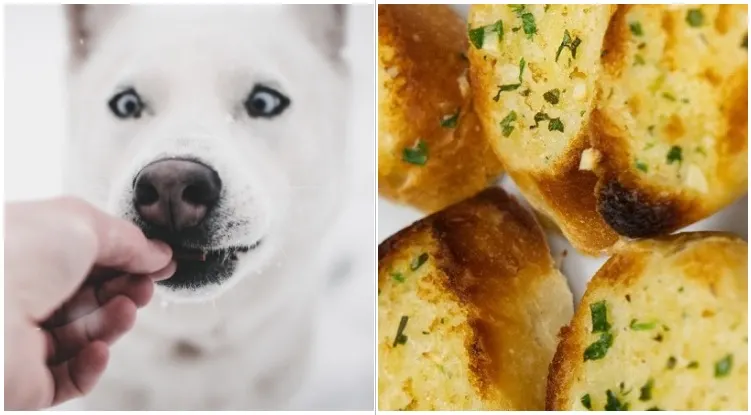Garlic bread is one of the favorite meals of many people, however — should how dangerous would it be to sneak a little bite under the table for your canine? Can dogs eat garlic bread? Or is it just equally as bad for them as regular garlic is?
Can dogs eat garlic bread?
While bread itself isn’t at all harmful for dogs (however it isn’t healthy either) garlic bread definitely is. And it’s not only the garlic that causes severe health issues. Garlic bread is high in calories, and most of them come from fat. That means that your dog won’t only have an incredibly high amount of calorie and fat intake, but that he will also be prone to certain health conditions such as pancreatitis and obesity.
So the short answer is — No, your dog definitely cannot eat garlic bread. However, if you want to learn why exactly garlic bread is so bad for canines, keep on reading this article.
Is garlic toxic for dogs?
Yes, absolutely. Garlic is one of the most toxic human foods for dogs. As much as it’s flavor makes every meal taste a bit better, for dogs a glove of garlic could even be lethal.
Garlic contains disulfides and thiosulphates, compounds that are toxic to dogs. After the dog ingests garlic, these compounds will be absorbed in the gastrointestinal tract and change into reactive oxidants, which will damage your dog’s red blood cells. As a result, several health conditions can occur including Heinz body anemia, methemoglobinemia, and hemolytic anemia.
While the concentration of garlic in garlic bread isn’t deadly high, the added butter, sodium and other seasonings aren’t healthy for your dog either.
And additionally, garlic bread isn’t beneficial to your dog’s health either. The nutritional values are pretty poor, and it’s mostly only rich in fat and carbohydrates.
How much garlic bread can kill a dog?
As toxic as pure garlic is for dogs, it’s very unlikely that garlic bread will kill him. Especially the ones of a larger frame, as they would have to eat a pretty portion of the garlic bread.
However, even small amounts of garlic or garlic powder can damage your dog’s blood cells causing anemia.
Studies have found that it would take about 15-30 grams of garlic per kilogram of body weight to produce harmful changes in a dog’s blood.
Thus, if you looked at it, a 20-pound dog would need about 50 cloves to be harmful.
Even a whole loaf of garlic bread does not contain that much actual garlic. However, you shouldn’t see that information as a green light for giving your dog garlic bread.
While a small amount won’t kill him, it still won’t add anything beneficial to his diet and your dog is still at risk for developing anemia.
How long does it take for a dog to develop garlic poisoning symptoms?
If your dog ate larger quantities of garlic, the symptoms can appear in less than a day. They include vomiting, diarrhea, abdominal pain and discolored urine.
It would take longer for anemia to develop — from a couple of days to several weeks.
However, if you only gave your dog a small piece of your garlic bread, chances are that no symptom will develop at all.
The amounts of garlic in garlic bread are in most cases too low to cause some serious complications.
My dog ate some garlic bread! What should I do?
First of all, try not to panic. Make sure to check the amount of garlic bread that your dog ate, and also the amount of garlic in that specific bread brand. After that, contact your vet and tell him everything you know.
If the amount wasn’t too high, he will most likely only recommend that you keep an eye on your dog. However if the amounts were larger, chances are that your vet will have to induce vomiting.
Food, diet and nutrition are such important topics for every dog owner. That’s why we have so many articles on it. Here are just some of them:
- Is cilantro bad for dogs? Here’s what we know
- Can dogs have vanilla? Here’s the truth
- Is almond butter safe for dogs?
- Can dogs eat coconut? Is it really safe?
- Is celery good for dogs? Here’s the truth
- Are Chicken Feet Safe For Dogs?
- Can dogs eat figs? A sweet fruit, but are they safe?

